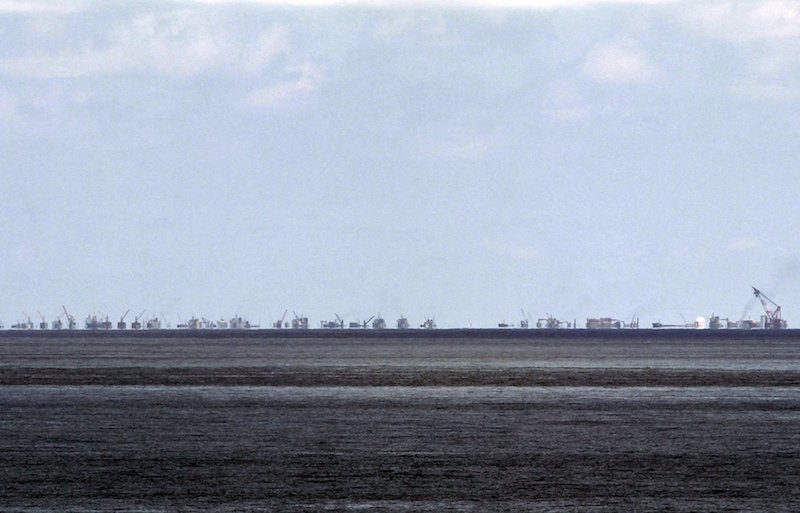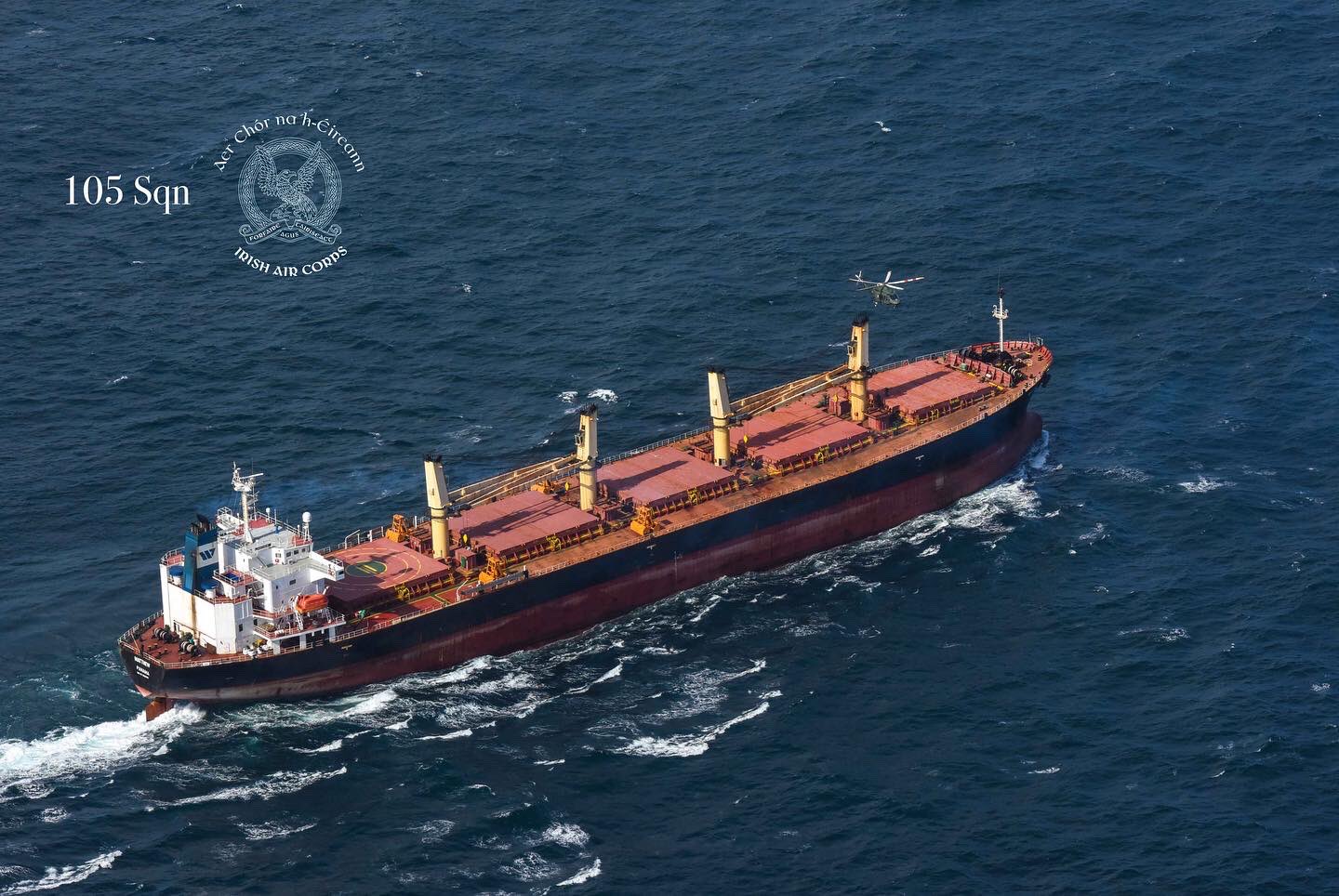The alleged on-going land reclamation of China at Subi reef is seen from Pagasa island (Thitu Island) in the Spratlys group of islands in the South China Sea, west of Palawan, Philippines, in this May 11, 2015 file photo. REUTERS/Ritchie B. Tongo
By David Tweed
(Bloomberg) — China sparked new questions about its intentions in the South China Sea after it deployed surface-to- air missiles to a contested island, a move that came just months after President Xi Jinping promised not to militarize the disputed atolls.
Satellite images showed two batteries of eight HQ-9 surface-to-air missile launchers and a radar system were deployed on Woody Islandsometime after Feb. 3, Fox News reported. That’s just days after the U.S. rebuffed China’s efforts to control one of the world’s busiest shipping lanes by sending a warship into the area.
The positioning of the missiles casts further doubt on Xi’s pledge at a summit with U.S. President Barack Obama in Washington in late September not to militarize the islands and suggests China is prepared to escalate tensions in order defend its claims, particularly with a ruling expected this year on an arbitration case brought by the Philippines to an international tribunal.
“If they militarize after saying they won’t, then that is significant for the U.S. debate about what to do for the next phase of the rebalance,” said Michael Pillsbury, director of the Center for Chinese Strategy at the Washington-based Hudson Institute and an adviser to the Pentagon. “This deployment is crossing a red line and means regular military units from the army, navy or air force may now be deployed.”
The military and economic rebalance to the region is Obama’s signature foreign policy initiative after previous administrations focused more on the Middle East and elsewhere. China sees the policy as an effort to contain its influenceas its growing military clout tests the U.S. Navy’sdecades-long dominance of the western Pacific.
Under Xi, China has reclaimed land to bolster its claims to more than 80 percent of the waterway that hosts $5 trillion of international shipping a year, adding airstrips and lighthouses. Asked about the missiles at a briefing in Beijing, Foreign Minister Wang Yi said that limited self-defense facilities on Woody are consistent with China’s self-protection policies and international law. He described the report as Western media hype.
Island Building
News of the missiles came as Obama and leaders from the Association of Southeast Asian Nations wrapped up a two-day summit in California where they underlined their commitment to ensuring “maritime security and safety, including the rights of freedom of navigation and overflight and other lawful uses of the seas.” Four of the 10 Asean members also claim portions of the South China Sea.
China has reclaimed 3,000 acres of land in the South China Sea over two years, warned U.S. military planes and ships from going near areas it controls and its ships have regularly clashed with Vietnamese and Philippine fishing boats. It is expanding its island building in the Paracels, according to recent images posted on the website of The Diplomat magazine. They show dredging and filling at two new sites in the island chain about 15 kilometers (9.3 miles) from Woody Island.
The Paracels are also claimed by Taiwan and Vietnam. Taiwan’s defense ministry said it was aware of Chinese missiles being deployed there. Vietnam considers every effort to build or renovate facilities on the South China Sea islands without permission of the government to be “illicit,” Foreign Ministry spokesman Le Hai Binh said in e-mail response to questions.
‘Concerns Me’
U.S. Pacific Command chief Harry Harris, on a visit to Tokyo, said the presence of missiles on the island would signal a militarization of the area.
The Chinese “have flown jet fighters out of the Paracels for a number of years now, and so it would not surprise me that they would add some measure of missile defense there, or offensive missiles for that matter,” Admiral Harris said at a briefing. Still, “it concerns me greatly.”
The HQ-9 is a long-range, high-altitude, surface-to-air missile system developed and manufactured by China Aerospace Science and Industry Corp. It is designed to track and destroy air targets including aircraft and cruise missiles within a range of 300 kilometers (185 miles) and as high as 7,000 meters (23,000 feet), according to the official Global Times newspaper. The cruising altitude of a commercial airliner is generally above 30,000 feet.
‘Into Question’
“While the Chinese foreign ministry could claim that the missiles are defensive in nature, their deployment certainly puts its claim that China wants to avoid further ‘militarization’ of the South China Sea into question,” said Felix Chang, a senior fellow at the Foreign Policy Research Institute in Philadelphia.
The deployment could pose a threat to U.S. P8-A Poseidon surveillance aircraft patrolling the South China Sea. The Chinese navy in May last year issued eight warnings to a P8-A flying over islands it claims in the Spratly island chain. The U.S. has twice sent warships within what China considers its territorial waters and Harris said “more complex” freedom-of- navigation operations were planned. The USS Curtis Wilbur passed near another island in the Paracel chain on Jan. 30.
“Washington should bear in mind that China will never turn a blind eye to any attempt that challenges its indisputable sovereignty,” the official Xinhua News Agency said in a commentary Wednesday. “Underestimation of China’s resolve to defend its core interests would be a fatal mistake.
–With assistance from John Boudreau, Angela Greiling Keane, Adela Lin, Keith Zhai, Isabel Reynolds, Toluse Olorunnipa and Ting Shi.
©2016 Bloomberg News

 Join The Club
Join The Club











